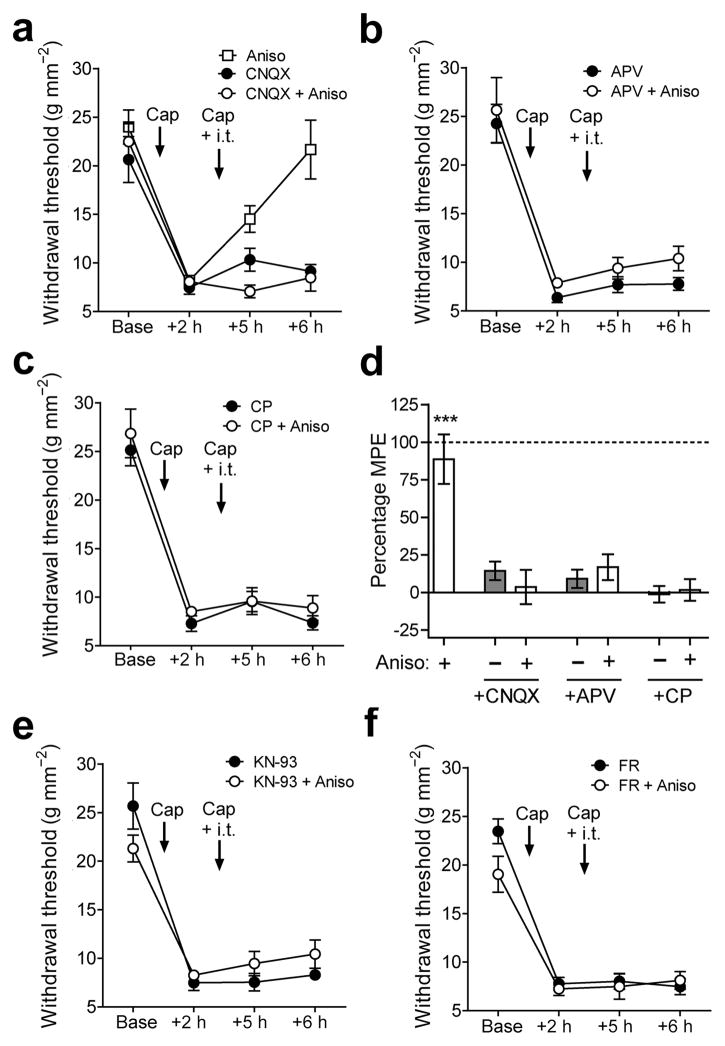Figure 2.
Requirement of glutamate, substance P, CaMKII and ERK signaling to render hyperalgesia labile. Changes in mechanical withdrawal thresholds induced by intraplantar injection of capsaicin followed by a second ipsilateral intraplantar of capsaicin (Cap) or vehicle (Veh) and intrathecal injection of: (a) CNQX ± Anisomycin (Aniso), (b) APV ± Aniso, (c) CP-99994 (CP) ± Aniso. Positive control with i.t. Aniso alone shown in (a). (d) Summary of antihyperalgesia induced by the treatments in (a–c) expressed as percentage of maximum possible effect (MPE). *** indicates P < 0.001 vs all other groups. (e,f) Changes in mechanical withdrawal thresholds induced by intraplantar injection of capsaicin followed by a second ipsilateral intraplantar of capsaicin and intrathecal injection of (e) the CaMKII inhibitor KN-93 or (f) the ERK inhibitor FR-180204 (FR), with or without Aniso. n = 6 mice per group except CP + Aniso in (c) n = 7 mice. All data are mean ± s.e.m.

